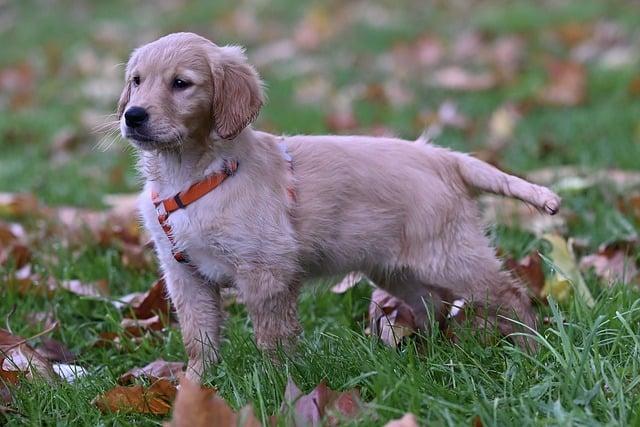In a quiet neighborhood, a loyal German Shepherd named Max stood guard outside his home. One evening, as shadows lengthened, a stranger approached, eyeing the house. Sensing danger, Max barked fiercely, his protective instincts ignited. The intruder hesitated, then retreated, deterred by the unwavering guardian. This story illustrates the profound bond between dogs and humans; they don’t just offer companionship but also protection. Investing in a dog means gaining a vigilant protector, ensuring safety and peace of mind for your family.
Contents
- Understanding the Role of Protection Dogs in Human Safety
- Selecting the Right Breed for Personal and Family Protection
- Training Techniques to Enhance a Dogs Protective Instincts
- Building a Strong Bond for Effective Protection and Trust
- Q&A
Understanding the Role of Protection Dogs in Human Safety
Protection dogs serve a vital function in enhancing human safety, acting as both a deterrent to potential threats and a proactive measure against danger. These specially trained canines possess an innate ability to sense changes in their environment, allowing them to detect suspicious behavior or potential intruders long before humans might notice. Their acute senses, combined with their protective instincts, make them invaluable companions for individuals seeking peace of mind in uncertain situations.
One of the most compelling aspects of protection dogs is their ability to provide a sense of security that transcends mere physical presence. When a protection dog is nearby, individuals often feel a heightened sense of safety, which can significantly reduce anxiety in high-risk environments. This psychological benefit is particularly important for those who may have experienced trauma or who live in areas with higher crime rates. The mere sight of a well-trained protection dog can deter potential threats, making it a powerful tool for personal safety.
Moreover, the training that these dogs undergo is rigorous and comprehensive, focusing not only on obedience but also on specific protective behaviors. They learn to assess situations, respond to commands, and engage appropriately when a threat is detected. This training ensures that the dog can differentiate between normal activities and genuine threats, allowing them to act decisively when necessary. The bond formed between the handler and the dog further enhances their effectiveness, as the dog becomes attuned to the handler’s emotions and reactions.
In addition to personal protection, these dogs can also play a crucial role in family safety. Families with children can benefit immensely from having a protection dog, as these animals are often gentle and nurturing with kids while remaining vigilant against potential dangers. The presence of a protection dog can foster a secure environment, allowing families to enjoy their lives without the constant worry of external threats. Investing in a protection dog is not just about having a guard; it’s about creating a safer, more confident lifestyle for you and your loved ones.
Selecting the Right Breed for Personal and Family Protection
When considering a canine companion for personal and family protection, it’s essential to evaluate various breeds that are known for their guarding instincts and loyalty. Certain breeds have been historically bred for protection, showcasing traits such as courage, intelligence, and a strong bond with their human families. These characteristics make them not only effective protectors but also loving companions.
Among the most popular breeds for protection are:
- German Shepherds: Renowned for their intelligence and versatility, they excel in various roles, including police and military work.
- Rottweilers: With their powerful build and confident demeanor, Rottweilers are natural guardians who are fiercely loyal to their families.
- Doberman Pinschers: Known for their speed and agility, Dobermans are alert and protective, making them excellent watchdogs.
- Belgian Malinois: Similar to German Shepherds, these dogs are highly trainable and often used in security and protection roles.
It’s crucial to consider the temperament and energy levels of these breeds. A dog that is overly aggressive may not be suitable for a family environment, while a breed that is too passive may not provide the protection you seek. Look for breeds that strike a balance between being protective and being gentle with children and other family members. Training and socialization from an early age are vital to ensure that your dog develops into a well-rounded protector.
Additionally, consider your living situation and lifestyle. Larger breeds may require more space and exercise, while smaller breeds can still offer protection in a more compact package. Assess your family’s needs, including the ages of children and any other pets, to find a breed that fits seamlessly into your home. Ultimately, the right choice will not only enhance your security but also enrich your family life with companionship and loyalty.
Training Techniques to Enhance a Dogs Protective Instincts
Enhancing a dog’s protective instincts requires a combination of training techniques that focus on building confidence, establishing clear communication, and reinforcing desired behaviors. One effective method is **positive reinforcement**, which encourages dogs to associate protective actions with rewards. By rewarding your dog with treats, praise, or playtime when they exhibit protective behaviors, you can strengthen their instinct to guard and protect.
Another valuable technique is **socialization**. Exposing your dog to various environments, people, and other animals helps them learn how to assess potential threats. This exposure not only builds their confidence but also teaches them to differentiate between normal situations and those that require a protective response. Regularly introducing your dog to new experiences can significantly enhance their ability to react appropriately in different scenarios.
Incorporating **obedience training** is also crucial in developing a dog’s protective instincts. Teaching commands such as “stay,” “come,” and “leave it” establishes a foundation of trust and respect between you and your dog. When your dog understands and responds to commands, they are more likely to follow your lead in potentially threatening situations. Consistent practice and reinforcement of these commands will ensure that your dog remains focused and responsive when it matters most.
Lastly, consider implementing **controlled exposure to stimuli** that may trigger protective instincts. This can include introducing your dog to various sounds, sights, and scenarios that mimic potential threats in a safe environment. Gradually increasing the intensity of these stimuli while rewarding calm behavior will help your dog learn to remain composed and assertive when faced with real-life situations. This method not only sharpens their instincts but also fosters a sense of security and confidence in their protective abilities.
Building a Strong Bond for Effective Protection and Trust
Establishing a deep connection with your dog is essential for fostering a sense of security and trust. When a dog feels bonded with its owner, it becomes more attuned to their emotions and needs, which enhances its protective instincts. This relationship is built on mutual respect and understanding, allowing the dog to recognize when its human is in danger or needs assistance. A strong bond not only empowers the dog to act as a protector but also ensures that it will respond to commands effectively in critical situations.
Training plays a pivotal role in developing this bond. Engaging in consistent and positive reinforcement training helps your dog understand its role within the family unit. Through various exercises, you can teach your dog to recognize threats and respond appropriately. Consider incorporating the following into your training regimen:
- Obedience Commands: Teaching basic commands like “sit,” “stay,” and “come” lays the groundwork for more advanced protective behaviors.
- Socialization: Exposing your dog to different environments, people, and animals helps it learn to assess situations and react calmly.
- Protection Drills: Practicing specific scenarios where your dog must protect you can enhance its instinctual responses.
Moreover, the breed of your dog can significantly influence its protective capabilities. Certain breeds are naturally predisposed to guarding and protecting their owners. Breeds such as German Shepherds, Rottweilers, and Doberman Pinschers are renowned for their loyalty and protective instincts. However, it’s crucial to remember that any dog, regardless of breed, can be trained to protect its owner effectively. The key lies in understanding your dog’s unique personality and tailoring your training approach accordingly.
Ultimately, the relationship between a dog and its owner is a partnership built on trust and communication. When a dog knows it can rely on its owner for guidance and support, it will be more inclined to take on the role of protector. By investing time and effort into building this bond, you not only enhance your dog’s protective instincts but also create a lifelong companion that will stand by your side through thick and thin.
Q&A
-
What breeds are known for protecting humans?
Several dog breeds are renowned for their protective instincts, including:
- German Shepherd
- Rottweiler
- Doberman Pinscher
- Belgian Malinois
- Boxer
These breeds are not only loyal but also possess the physical strength and intelligence necessary to guard their families effectively.
-
How do dogs protect their owners?
Dogs protect their owners through various behaviors, such as:
- Barking to alert you of intruders
- Positioning themselves between you and a perceived threat
- Displaying aggressive postures when necessary
These instincts stem from their natural protective nature and strong bond with their human companions.
-
Can any dog be trained to protect humans?
While many breeds have natural protective instincts, most dogs can be trained to protect their owners. Training involves:
- Socialization to ensure they can differentiate between friends and threats
- Obedience training to respond to commands
- Protection training to teach them how to react in various situations
With the right training and socialization, even smaller breeds can learn to be effective protectors.
-
What are the benefits of having a protective dog?
Having a protective dog offers numerous benefits, including:
- Enhanced security for your home and family
- Increased peace of mind knowing you have a loyal companion
- Improved physical fitness through regular walks and play
Investing in a protective dog not only safeguards your home but also enriches your life with companionship and joy.
the bond between humans and protective dog breeds is undeniable. These loyal companions not only safeguard our homes but also enrich our lives with their unwavering loyalty. Choose wisely, and let a guardian dog enhance your safety and happiness.

大家好,我是彼得潘,專業的手法身體治療師。我喜歡探索和研究各種主題,並透過與人工智慧的合作分享專業、實用、有趣的文章。我們定期進行人工審核,以確保內容的準確性。如果您發現文章中有任何不準確的地方,請隨時與我們聯繫,我們會及時糾正。您可以透過 [email protected] 與我們聯繫。



